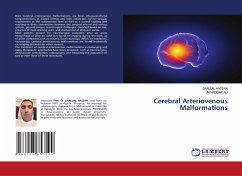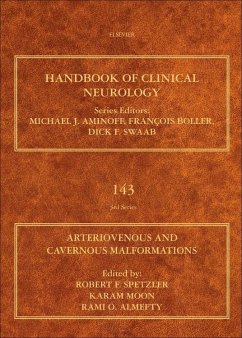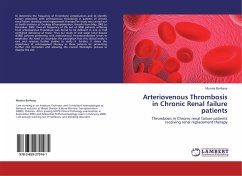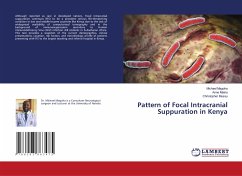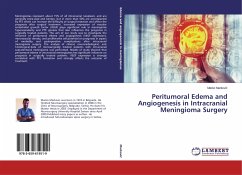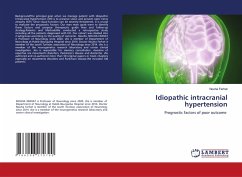
INTRACRANIAL ARTERIOVENOUS MALFORMATIONS
Presentation, Management, and Outcome
Versandkostenfrei!
Versandfertig in 6-10 Tagen
39,99 €
inkl. MwSt.

PAYBACK Punkte
20 °P sammeln!
Arteriovenous malformation is not an uncommon disease. The hospital-based frequency was established to be 40 per 100,000 admission cases. It occurred in more than twice males as many as females. The commonest mode of presentation is intracranial hemorrhage and in the younger age group. Although some patients have presentation other than hemorrhage, they still have the risk of bleeding from the malformation if complete obliteration was not secured. Although several therapeutic modalities are available to treat such a disease, the ideal solution should be tailored for each case separately. The m...
Arteriovenous malformation is not an uncommon disease. The hospital-based frequency was established to be 40 per 100,000 admission cases. It occurred in more than twice males as many as females. The commonest mode of presentation is intracranial hemorrhage and in the younger age group. Although some patients have presentation other than hemorrhage, they still have the risk of bleeding from the malformation if complete obliteration was not secured. Although several therapeutic modalities are available to treat such a disease, the ideal solution should be tailored for each case separately. The management is best when the case is discussed by a team including neurosurgeon, interventional neuroradiologist, and radiation therapist. Regardless of the clinical presentation, active management aimed at complete obliteration of the malformation should be taken, whenever possible. Still to date, surgical resection represents the ideal option, and gives the highest obliteration rate. The first line of treatment of AVM should be surgical excision, either alone or in various combinations with the other therapeutic modalities.



